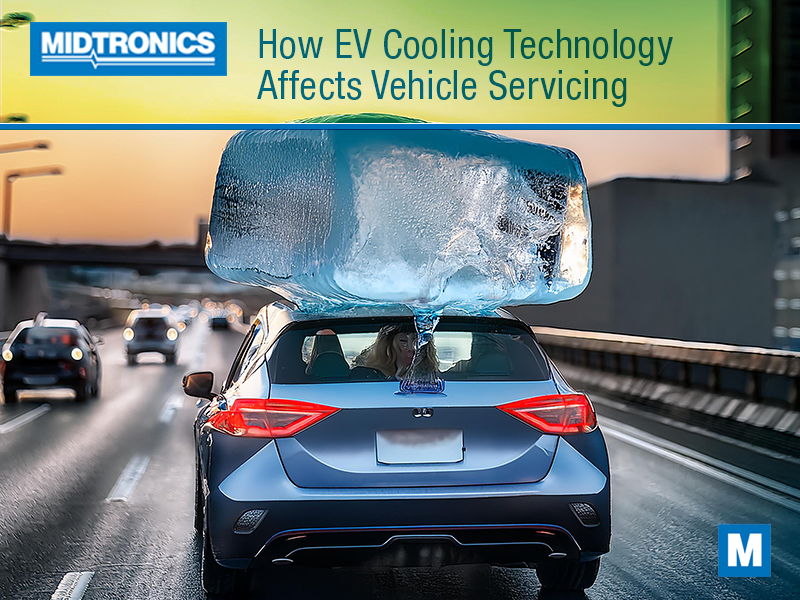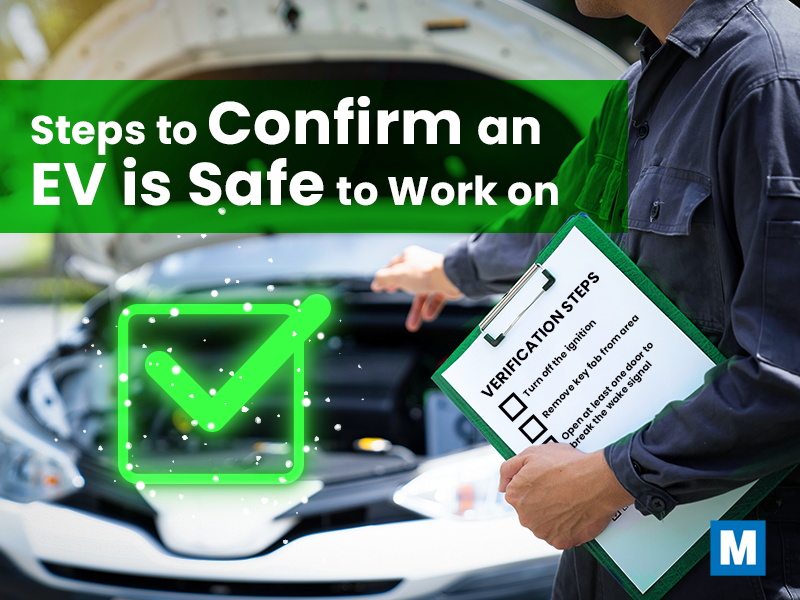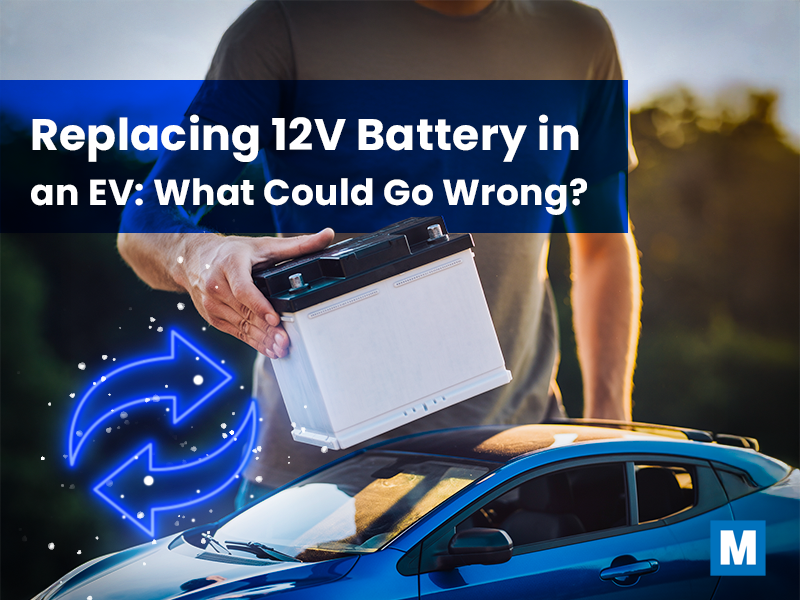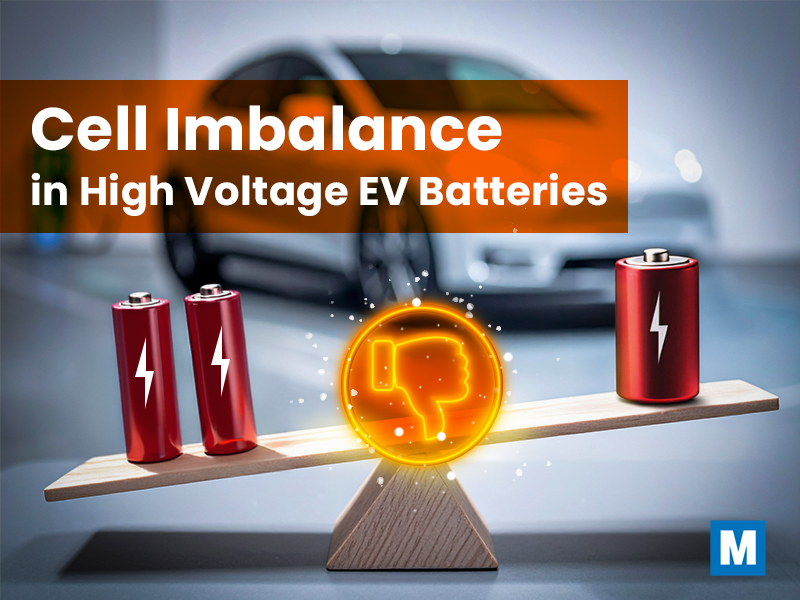Automotive service professionals are well-versed in how internal combustion engine vehicles must be serviced, from filters and spark plugs to fluids in multiple systems. One of the most enticing things for electric vehicle purchasers is the prospect that they won’t have any maintenance required. However, that’s not exactly true.
One of the systems that still requires attention from time to time is the cooling system. It doesn’t function quite the same as an ICE vehicle’s cooling system, but it’s still present in an EV in some capacity. As automotive professionals, knowing how and when to service these system is a significant benefit for your customers and their vehicle health.
Types of EV Battery Cooling Technologies
Exciting things are coming in terms of battery cooling with technologies like phase change materials – quite literally meaning materials that change from solid to liquid for heat transfer. But for current technology, two types prevail: air cooling systems and liquid cooling systems. These battery thermal management systems, or BTMS, are what strip excessive heat from the battery and disperse it.
What we know about EVs is that heat is a killer. Should the temperature climb too high and too fast, thermal runaway can happen. But over time, heat can accelerate degradation, causing loss of range and lower battery efficiency and performance.
Air Cooling Systems
Like cooling methods in many motorcycles and early-model cars, air cooling has its place in EVs too. It relies on air circulation to dissipate heat from EV batteries, much like air passing over the fins on a motorcycle’s cylinders. While simple in design, air cooling has limitations in extreme temperature conditions, and it may not be able to keep up with the heat generated by battery discharge along with ambient air temperatures.
Air cooling is currently in use for a small segment of the market, but as it’s not the most efficient, it’s likely not going to gain much more widespread adoption.
Liquid Cooling Systems
In contrast, liquid cooling systems are a prevalent method used to regulate the temperature of EV batteries. They circulate coolant through the battery pack, helping maintain the ideal temperature for the best battery efficiency and durability. It’s more complex than air-cooled systems, and it adds the weight of additional components and the liquid in the system. What’s more, introducing a liquid to an electrified environment must be done extremely cautiously, for obvious reasons.
It’s the most commonly adopted cooling technology for EV batteries, used by virtually all carmakers that have electric models in production now. It’s proven, and it’s the style that’s likely to stay at the forefront for the coming generation.
Servicing EV Battery Thermal Management Systems
Among EV makers, it’s required to have the liquid cooling system inspected for condition and pH tested routinely, with some suggesting annually while others mandate it every two years. These systems typically use tubing on or around the battery modules, absorbing heat from them so it can be transferred into the air. Unlike ICE vehicles, though, the additives and other chemicals in the fluid don’t degrade in the same way as it’s almost always only one metal they come into contact with, limiting the reaction.
Still, the coolant will eventually need to be exchanged on most EVs, and although much rarer than with ICE vehicles, there’s potential for leaks in the system as well. These are both reasons that an EV will need to make a visit for professional servicing.
Air cooling systems, on the other hand, are almost all passive in design. Airflow over the battery while in motion is intended to keep the battery within normal operating parameters. Routine maintenance only involves ensuring the air ducts that move air over the battery pack are kept clear.
That said, long-term servicing for air-cooled EV battery packs can be much more involved. Module failures are more common as temperatures can cause damage, and it’s not unheard of to replace individual modules or complete battery packs in time. When that’s the case, battery module balancing is necessary.
Frequency of BTMS Servicing
For liquid-cooled EV BTMS systems, the service intervals are dictated by the manufacturer. In the industry, design differences as well as fluid chemistries will factor into how often coolant needs to be flushed and filled. Some manufacturers are confident that their coolant will never need to be replaced unless a repair is required, but others have set mileage intervals.
A couple of import brands specify an interval of 80,000 miles, which is approximately every five to six years for the average driver. Others are around the eight-year mark, roughly the time the battery’s EPA-mandated warranty expires. Others yet recommend changing the fluid at 150,000 miles, or approximately 10 to 12 years after the vehicle is put into service.
However, coolant exchanges are not the only EV BTMS services that dealers should be prepared to handle. EV battery health checks can be slotted into the routine maintenance schedule or offered in circumstances such as reduced range complaints or when the car is to be resold.
When a battery’s health is in question, a module replacement may be necessary, and module balancing required before it’s put back into service. For air-cooled batteries, the instances of a bad module are usually higher, and these types of services are more commonly required. Expect cars 10 to 15 years old to be the ones this service is most necessary for.
Why It Matters to Service Shops
An increasingly electric vehicle fleet might seem like it’s going to take business away from repair shops, but there are still services they will require, such as the cooling system and repairs related to thermal management and faulty batteries. Being prepared to field these types of concerns is the ticket.
Technicians should be trained on how to safely exchange the coolant on models. Ensure you have the equipment to service battery thermal management systems, ideally across many different manufacturers. And with equipment like the xMB-9640 High Voltage Module Balancer, you’ll be prepared to balance modules reliably.




